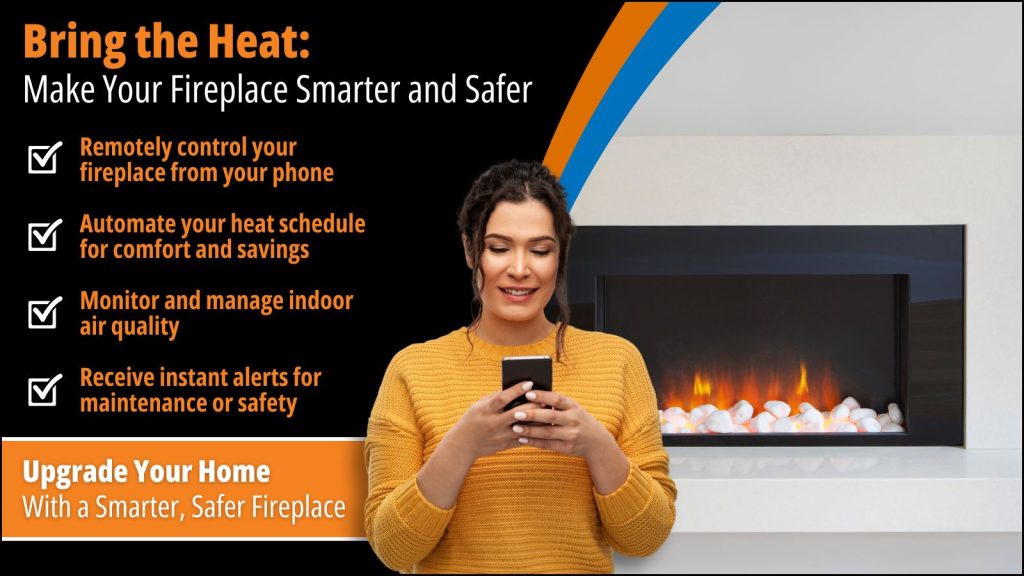In recent years, smart home technology has transformed the way we live—offering greater convenience, energy efficiency, and peace of mind. One area where this technology is making a significant impact is in the operation of fireplaces.
Whether you have a traditional wood-burning hearth, a modern gas insert, or an electric model, integrating smart technology can significantly enhance safety and optimize efficiency. Here’s how.

Smart Fireplace Controls
The most direct application of smart technology for fireplaces is through automated controls. Smart fireplace controllers allow users to turn their fireplace on or off remotely via smartphone apps or voice assistants like Alexa or Google Assistant. This eliminates the need for manually operating switches or knobs, reducing the risk of user error or accidental activation.
Many systems also offer programmable schedules, so you can set your fireplace to turn on during specific times, such as early morning or late evening, without having to remember. These features are especially helpful in preventing the fireplace from being left on unattended, a leading cause of residential fire hazards.
Temperature and Flame Monitoring
Smart thermostats and integrated sensors can monitor the temperature in real-time, ensuring the fireplace does not overheat the room. Some advanced gas and electric fireplaces even adjust their flame intensity based on the room’s ambient temperature to maintain comfort while avoiding energy waste.
Additionally, carbon monoxide and smoke detectors can be integrated with smart home systems. If dangerous levels are detected, the system can automatically shut off the fireplace and alert the homeowner through mobile notifications. These proactive alerts provide critical time to act before situations escalate, enhancing home safety.
Air Quality Management
Wood-burning fireplaces, in particular, can affect indoor air quality. Smart air quality monitors can help detect particulates and pollutants in the air, prompting users to improve ventilation or reduce fireplace usage when necessary. These monitors can be connected to smart exhaust systems or fans to help clear the air efficiently and automatically when needed.
Energy Efficiency and Cost Savings
Smart home integrations not only make fireplaces safer but also more efficient. Some smart fireplaces are designed to work in tandem with zoned heating systems, meaning they can provide heat only to the rooms that are in use. This can significantly reduce your reliance on central heating systems and lower overall energy consumption.
Moreover, usage analytics provided by smart apps can help homeowners understand when and how long their fireplace is being used, encouraging more conscious and efficient operation.
Maintenance Alerts and Diagnostics
Some smart fireplace systems come equipped with diagnostic tools that monitor system performance and detect when maintenance is required. Whether it’s a clogged vent, a faulty pilot light, or low fuel levels, early alerts can prevent larger issues down the line and ensure that your fireplace continues to operate safely and efficiently.
Smart technology brings a new level of control, safety, and efficiency to fireplace operation. From remote access and temperature regulation to air quality monitoring and predictive maintenance, these innovations allow homeowners to enjoy the warmth and ambiance of a fire with greater peace of mind. As smart home ecosystems continue to evolve, fireplaces are becoming not just a decorative element, but a high-tech feature that contributes meaningfully to a safer, more efficient living space.
Our team of Home Performance Experts has served the I-5 corridor from Blaine to Marysville, Oak Harbor to Concrete, and the San Juan Islands since 1972 with a mission of Improving Lives™. We look forward to serving you too! Contact Firelight by Barron today for smart fireplace services.

